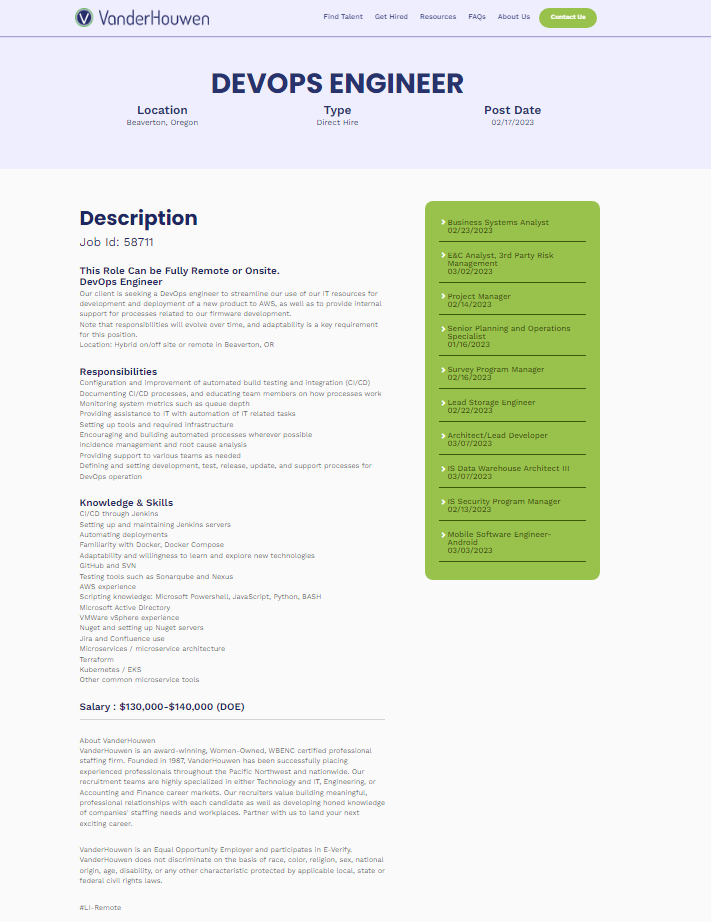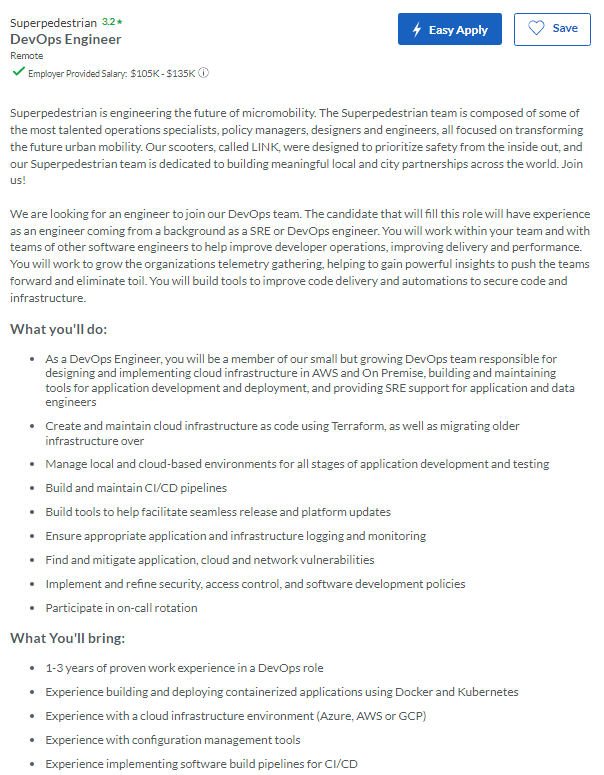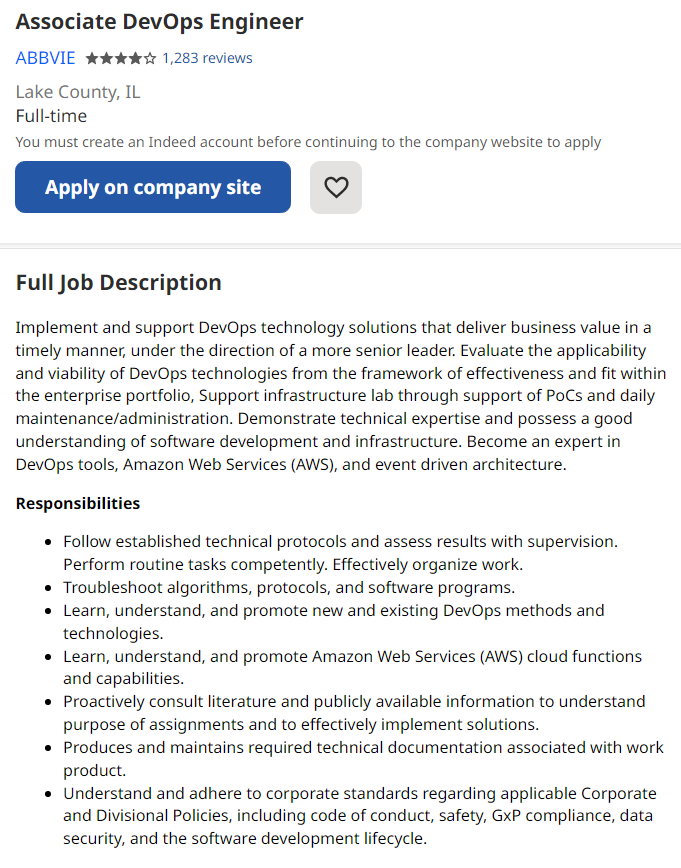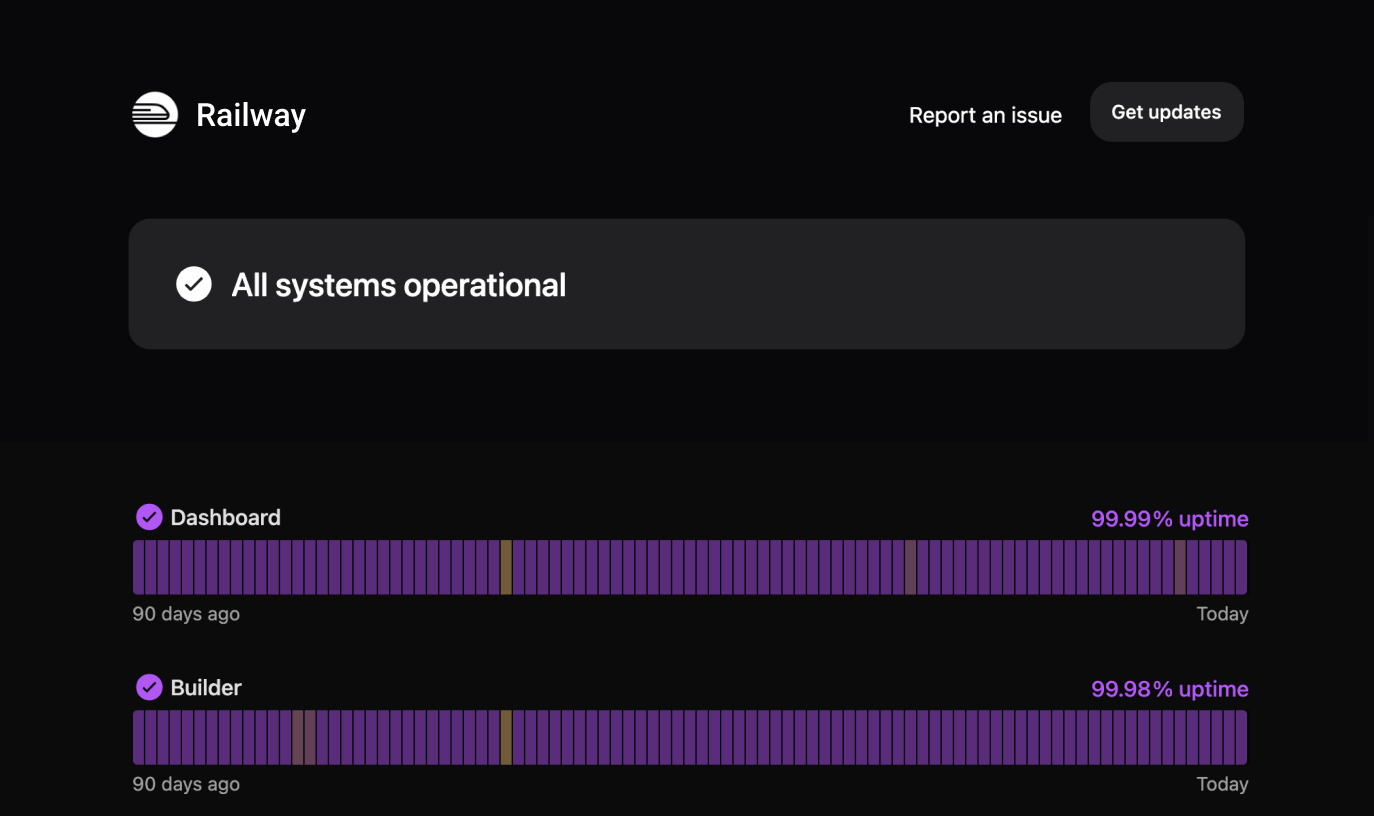What Does A DevOps Engineer Do & How To Create The Perfect Job Description

There are a variety of DevOps roles that make up a cohesive DevOps team — and one of the most important roles is DevOps engineer.
DevOps engineer take on a number of key responsibilities that make them major factors in the software development life cycle. DevOps deals with many strategies and tools (like Instatus!) that enhance workflows, and it’s part of the job of a DeOps engineer to understand, select, and implement these strategies and tools.
What does that entail exactly? Let’s discuss.
What Does a DevOps Engineer Do?
DevOps engineers wear a lot of hats. They’re generalists with a wide variety of skills that intersect with a bunch of key DevOps tasks and workflows, including:
- Release management
- Infrastructure management
- System administration
- Security & testing
- Advocacy & coaching
In other words, DevOps engineers are adaptable DevOps experts who are able to unify development and operations in an organization and break down departmental silos through open lines of communication. They’re usually senior employees with a number of responsibilities related to management, leadership, coaching, and the establishment of a DevOps culture.
They also manage software development and improve workflows by introducing useful tools and techniques into the process. Their responsibility is to streamline the development life cycle to increase the efficiency of things like software updates and maintenance.
DevOps Engineer Job Duties and Requirements
Let's take a closer look at the specific duties and responsibilities of a DevOps engineer. Note that these can vary slightly depending on the company you apply for — some newer startups may have different roles compared to more established companies. However, in general, a DevOps engineer's duties are a mix of leadership and technical responsibilities.
Here are some examples of DevOps engineer responsibilities:
- Implementing and managing automation tools to improve the development cycle.
- Planning and overseeing the project management process.
- Coordinating different teams to troubleshoot and fix software bugs.
- Periodically reporting progress to upper management.
- Keeping track of customer satisfaction.
- Updating or improving workflows to increase efficiency and reduce wastage.
- Introducing DevOps security measures in response to vulnerability assessments.
Companies also usually require their DevOps engineers to have certain experiences, including:
- Experience with DevOps metrics & KPIs.
- Experience with reviewing and validating code.
- Proficiency in various programming languages.
- Knowledge of root cause analysis and SQL.
- A bachelor’s degree in computer science or a relevant field.
- A minimum of 3 years as a DevOps engineer or a related role.
Salary Benchmarks For A DevOps Engineer

According to job sites like Glassdoor and Talent.com, the average total pay for DevOps engineers is $133,885 per year, with a range of $86,000 to $213,000.
DevOps Engineer Job Listing Examples
Here are some example job descriptions you can use for inspiration as you think about writing your own:
VanderHouwen DevOps Engineer

Superpedestrian DevOps Engineer

ABBVIE Associate DevOps Engineer

Best Practices When Creating and Posting Your Job Description
“Who We Are” — Tell Them About Your Organization
Each job description should have a section about who you are as a company and what your missions and values are. This should just be a brief introduction that tells applicants what kind of company they’d be working for. You can give them a sense of your work culture and what you’re striving to achieve in the industry.
Describe the Position
You should describe the DevOps position and what the job will entail — basically, give an overview of what kind of role it is and the responsibilities involved. Emphasize the most important aspects of the job. You don’t have to go into too much detail in this overview — that should come later when you list off the job duties.
Qualifications and Skills
You should also include a list of skills and qualifications you’re looking for in a candidate. Make sure to emphasize which skills are required and which ones are just desirable. When choosing what to include, think about in-demand DevOps skills you value the most. It’s best to list them as bullet points to make them easy to read.
Include Salary Info
Include the job salary information somewhere in your job description. It’s best to have it near the top, so candidates can quickly see whether the job meets their salary requirements. You should also mention whether the job is full-time or part-time, and if working remotely is an option.
Make sure you’re clear about how much they’ll earn annually and include any bonuses or other additional pay you can offer. If you don’t want to include a set salary amount, at least include a range.
Salaries can vary based on a few factors:
- Location
- Company size
- Company budget
Make sure to do your research and assess your company before deciding on an appropriate salary. The role’s level of seniority should also influence the salary — for example, is it a senior position? If so, the salary should be at the higher end of the range.
Create A Great Call To Action (CTA)
Near the end of the job description, remember to include instructions for potential candidates to follow should they wish to apply for the role. Use a great CTA to entice them into action, such as ‘send your application here’. The instructions should be clear and concise — include too many steps and candidates may get overwhelmed.
Alongside your instructions should be some sentiment to persuade candidates to apply. For example, you can mention company values or discuss your vision and how applicants can be a part of something great. This will help you stand out from the competition.
Job Description Template You Can Use
Introduction
At [Company Name], customer satisfaction is our sole focus and underlies everything we do. Our mission is to [state your mission]. We value our employees and seek to [discuss work culture]. Our ultimate goal is to create a world where [state your plans for the future or goals you're working on].
To achieve [your goals], we strive to build functional software that elevates each customer’s experience. To better satisfy customer needs, we are seeking an experienced DevOps engineer who can streamline this process.
Job Description
We are seeking a DevOps engineer with experience in software development or management. In this role, you will coordinate with DevOps teams, take on a managerial role, and implement various agile techniques and tools to automate the DevOps life cycle.
You will assist in building and maintaining scalable cloud infrastructure and implementing monitoring systems to regularly check for functional errors. We are looking for a team player with excellent communication and time management skills, who is passionate about IT and customer experience.
Responsibilities
- Execute software updates and perform maintenance tasks.
- Develop and introduce tools to improve software reliability and increase customer satisfaction.
- Conduct regular risk assessments and address technical errors.
- Design and optimize automation processes.
- Collaborate with teams to address security and development issues.
- Create custom workflows and find ways to streamline the software development and maintenance processes.
Skills and Qualifications
Required
- Proficient in Python or Ruby.
- 2+ years of experience in DevOps or software engineering.
- Experience in project management or a related field.
- A degree in computer engineering, IT, or a similar field.
- Experience with scalable software development or engineering.
- Knowledgeable of IT operations and agile methodologies.
Desired
- Familiarity with CI/CD tools such as GitLab and Jira.
Salary
- Role: [full-time, part-time, etc.]
- Salary: [base pay] + [additional compensation]
Benefits
- Flexible hours
- Option to work remotely
- Access to free memberships (e.g., gyms, yoga studios, etc.)
- Sponsorships
- Paid time off for special occasions (e.g., weddings)
- Office parties
Call To Action
If you're interested in this job, please email your job application to email@domain.com. Join our team and be at the forefront of [company mission].
Why Choose Us?
[State what makes your company unique compared to your competitors and how you value your employees]. If you want to learn more, go to: examplesite.com/candidate-info
Conclusion
The core responsibilities of DevOps engineers revolve around streamlining processes like updates and troubleshooting by implementing useful tools and strategies. DevOps engineers ultimately strive to keep customers happy and satisfied, and software maintenance is a big part of that.
If you’re looking for a simple (but powerful) status page tool, look no further than Instatus. With Instatus, you can create beautiful, interactive status pages in minutes—not hours. They’re fully customizable and integrate seamlessly into your existing DevOps toolchain.
Create a free Instatus status page today and make life easier for your DevOps engineers!
Get ready for downtime
Monitor your services
Fix incidents with your team
Share your status with customers


